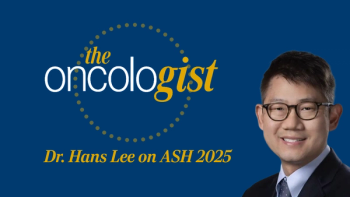
Optimizing Patient Monitoring CAR T Treatment
Nausheen Ahmed, MD, discusses the guidelines for monitoring patients after receiving CAR T-cell therapy.
CAR T-cell therapies have shown remarkable efficacy in treating hematologic malignancies but carry risks. Current guidelines require close patient monitoring for 4 weeks post-treatment. A study of 475 patients found that serious side effects like cytokine release syndrome (CRS) and immune effector cell-associated neurotoxicity syndrome (ICANS) are extremely rare after 2 weeks. While infections caused mortality after the first month, no new cases of CRS occurred after 2 weeks and only 1 case of ICANS developed in the third week. These findings suggest that a more flexible monitoring period beyond 14 days may be safe and could potentially reduce patient burden and healthcare costs.
Here, Nausheen Ahmed, MD, associate professor of hematologic malignancies and cellular therapeutics at the University of Kansas Medical Center, and primary author of the study, discusses these findings and implications.
Transcription:
0:05 | The main reason that a patient should be near the near the treatment center is this if there's a high risk of some very, you know, very dangerous side effects, like CRS and neurotoxicity. So I do think that the first two weeks, they should they should be really monitored in a place where there's an infrastructure where they can get into, they can care the treatment, like promptly. And and there's intensives. And everyone that's that's very focused on on on car T. But after two weeks, I don't think that there's you know, I think that it's the monitoring should not There's no magical four weeks, right? The monitoring and the because there's still there's still morbidity, there's still there's still mortality from infections, even up to the 90 day mark.
0:45 | So I think it has to be a continuum. At some point, whenever the patient's stable enough, they should be able when when I said I emphasize stable enough, I emphasize flexible monitoring period, or whenever it is determined between the treatment center and the referring oncologist that the patient is now stable, to be back at the infrastructure in the community. That's when the transition would be ideal. And that could be that could be at any time point. And it would, it would depend on what the infrastructure is locally. And really, the focus at that point should be monitoring for infections. Being able to communicate directly with the treatment center having a pathway for the patient to be seen promptly at a local facility and may be transferred to the treatment center if needed, because there still can be risks. So the focus should be on collaboration and understanding. Understanding what are the what are the reasons for mortality after the two weeks, which is infections primarily.









































